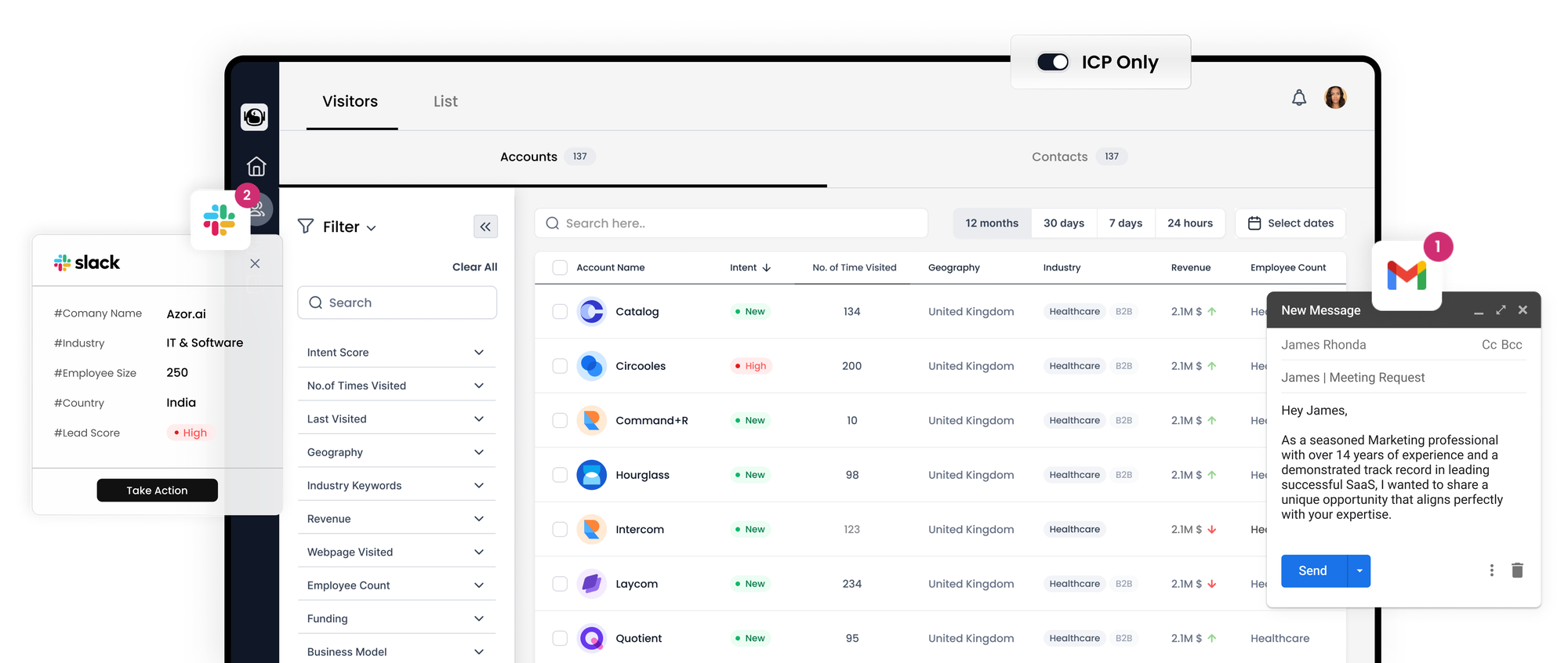4 Effective B2B Sales Strategies to Attract More Customers

B2B sales can be a challenging endeavor without the right strategies in place. Acquiring qualified leads to maintain a healthy sales pipeline, especially considering the often lengthy sales cycles, can be an uphill battle. Moreover, B2B sales transcends simple transactions; it necessitates intricate strategies to convince all stakeholders involved in a business deal. In this article, we will delve into four proven B2B sales strategies that have enabled numerous businesses to overcome these challenges and maintain a competitive edge.

1. Strategic Selling
Strategic selling, pioneered by the Miller Heiman Group, is a tactic that emphasizes winning complex deals through a scalable, insights-driven approach. At its core, this approach involves identifying various points of contact within the prospect's company, considering their influence on the sales process, and evaluating the level of support they can offer during decision-making.
For instance, let's envision you are selling a project management and automation tool to a company. Your initial point of contact might be the operations manager or a marketing manager, individuals actively seeking productivity tools to enhance team efficiency. Upon engaging with them, you might discover that the marketing manager can act as a "coach" to promote the introduction of your software, while the operations manager serves as the "economic buyer" who will make the final decision.
To kickstart meaningful conversations, you tailor your value proposition according to the marketing department's needs during your outreach. Subsequently, you provide the marketing manager with the information required to persuade the operations manager. Alternatively, you orchestrate a meeting involving both the marketing and operations managers, potentially accompanied by the IT manager, who assumes the role of the "technical buyer." With the marketing manager's assistance, you secure the operations manager's approval, while the IT manager gives her endorsement. This is the essence of strategic selling.
Why does it work?
Strategic selling compels sales teams to go beyond establishing a single point of contact within the prospect's organization. It encourages them to delve deeper into the organizational chart, conducting comprehensive account research. By identifying all individuals capable of influencing or making decisions, this approach ensures a more thorough engagement with key stakeholders.
2. Solution Selling
As the name implies, solution selling revolves around addressing the prospect's needs rather than solely focusing on the product sales process. In essence, it entails diagnosing the prospect's challenges, goals, and requirements and subsequently recommending products or services to address these issues.
This approach proves particularly effective when your business offers customized solutions tailored to your target market. Let's explore how solution selling unfolds in a B2B context, using the example of a cloud storage provider:
- Prepare
Begin by researching the prospect's pain points and their prior attempts to find solutions.
- Diagnose
Engage in a conversation with the prospect, employing open-ended questions to gain insights into their business, data storage needs, space requirements, and more.
- Qualify
Assess whether the prospect aligns with your ideal customer persona, exhibits an interest in migrating data to the cloud, possesses a budget and timeline, and identify the ultimate decision-maker.
- Educate
If the prospect meets your criteria, educate them on how your cloud storage solution can resolve their current challenges, highlighting your competitive advantages through case studies and success stories.
- Solve
Provide a tailored solution addressing their specific needs, along with relevant case studies showcasing your past successes.
- Close the Deal
Convince the prospect of the value of your solution and work towards onboarding them to your cloud service, negotiating terms to finalize the deal.
By utilizing tools like Salesflare, you can easily adapt your sales pipeline to align with the steps of the solution-selling process. Ultimately, all these B2B sales strategies aim to enhance customer satisfaction by tailoring your approach to address the unique needs and challenges of each client.
Why does it work?
Solution selling resonates with B2B businesses because it prioritizes the prospect's experience right from the outset of the sales cycle. By actively listening to their needs and providing customized solutions, you not only demonstrate your commitment but also build stronger relationships, ultimately leading to higher conversion rates and sales.
3. Account-Based Selling
Account-based selling is a strategic approach that Gartner anticipated would be embraced by 75% of B2B businesses by 2019. This method revolves around treating each account as a unique market entity. It involves the implementation of a multi-touch, multi-channel strategy spanning the entire organization to establish connections with multiple stakeholders within a prospective company.
Account-based selling typically comprises four key tactics:
1. Select Target Accounts
Begin by creating a list of logistics companies that could benefit from your service management software, based on specific criteria observed in your current customer base.
2. Investigate & Identify
Dive into data and conduct research to identify common challenges faced by these logistics companies across various processes and organizational levels. Identify key decision-makers and influencers within these companies.
3. Personalized Value
Tailor your value proposition to create distinct variations that directly address the unique challenges and objectives of different stakeholders within the target company.
4. Outreach
Reach out to the identified stakeholders to initiate meaningful conversations.
To successfully implement account-based selling, having sufficient data on either existing customers or the target market is crucial to identify common characteristics. This strategy is primarily about prospecting for information (roughly 90%) and pitching the solution (about 10%).
Account-based selling is particularly well-suited for companies dealing with complex sales interactions, extended sales cycles, multiple decision-makers, and opportunities for up-selling and cross-selling.
Why does it work?
Account-based selling excels at engaging multiple stakeholders within a prospective company. By delivering different value propositions based on buyer personas and their position within the sales cycle, it effectively addresses their challenges and objectives. Providing the right message to the right person at the right time helps forge stronger relationships with the prospect company, garnering more support from stakeholders and leading to high-value conversions.
4. Social Selling
According to Forrester, 68% of B2B customers conduct research for the solutions they need on search engines and social media. Social selling predominantly focuses on the latter.
Social selling involves establishing your business within a defined target market and then concentrating on building relationships with prospect companies as the initial step in the sales process. Today, this often entails leveraging social platforms such as LinkedIn, Twitter, Facebook, and others to share relevant content for engaging potential buyers or nurturing existing ones.
Crucially, social selling distinguishes itself from traditional marketing by emphasizing the creation of one-on-one relationships with prospects across these platforms, as opposed to broadcasting messages to a broader audience.
Key components of social selling include:
1. Optimized Profile
Ensuring that your social media profile clearly communicates your business's value proposition.
2. Networking
Actively connecting with prospects and industry influencers on common ground.
3. Content Sharing
Sharing relevant content that sparks discussions and adds value to your network, rather than directly selling your products or services.
The ultimate goal of social selling is to position your business as industry experts eager to engage in meaningful conversations with companies rather than solely focused on selling. Effective LinkedIn sales strategies, for instance, involve gradual steps to generate a higher return on investment.
Why does it work?
Social selling resonates with B2B businesses because it prioritizes relationship-building. By connecting with prospects and promoting content relevant to their interests across their preferred platforms, salespeople are more likely to engage in deeper conversations about topics that genuinely matter to prospects. Additionally, it enables monitoring of competitors' approaches, target audience interactions, and customer sentiments.
Conclusion: Choosing the Right B2B Sales Strategy
The choice of the most suitable B2B sales strategy depends on your specific business context. Before selecting a strategy, assess your current sales processes, identify target market segments, consider the preferred modes of engagement for your audience, determine the number of decision-makers involved, define your acceptable sales cycle duration, and evaluate available resources.
In the evolving landscape of B2B sales, success hinges on the ability to identify the right prospects and engage with their internal decision-makers using the appropriate message, timing, and channels. Each of the four strategies presented here offers a unique approach to achieving this goal, and the choice should align with your business's unique requirements and capabilities.
